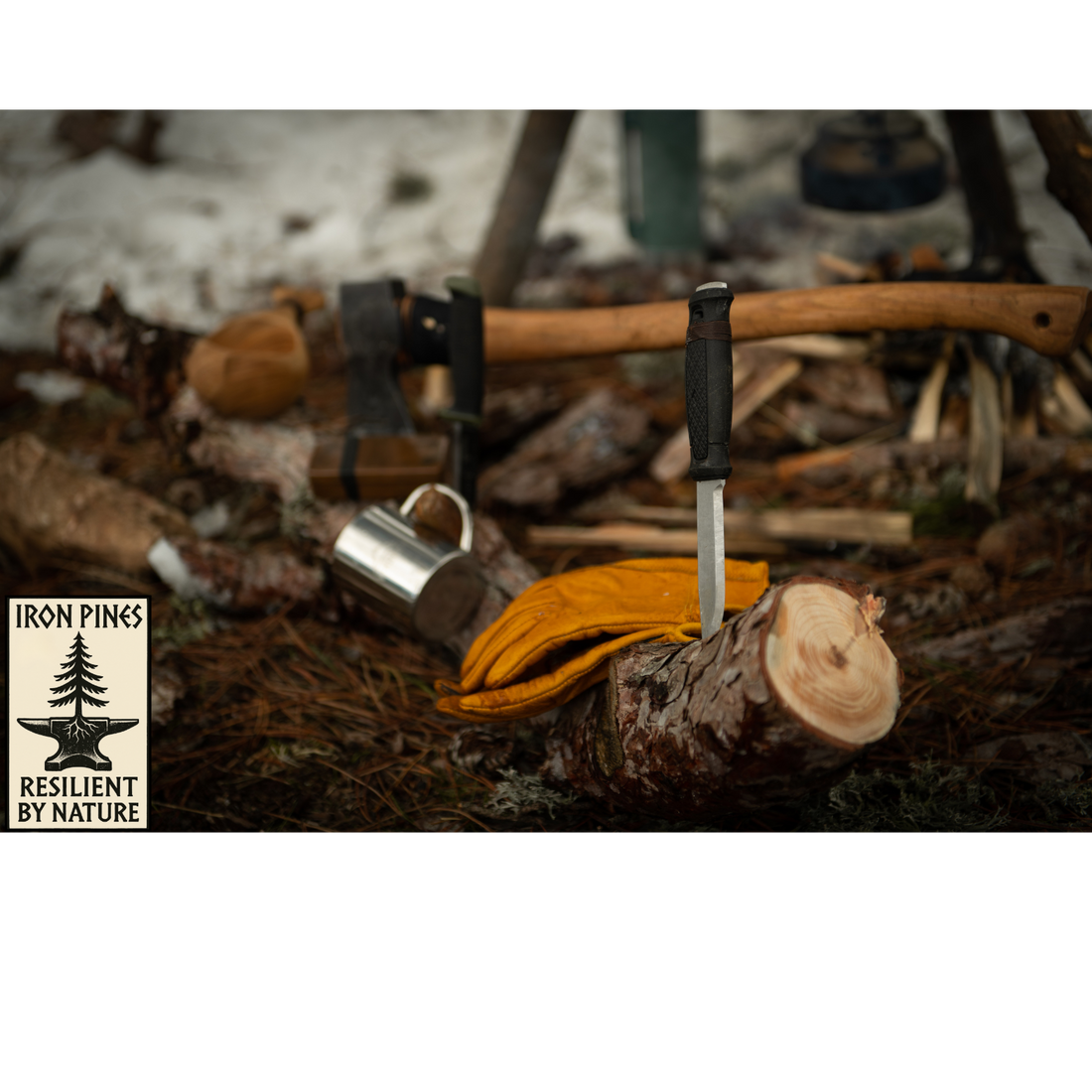
The Bushcraft Mindset: How Less Becomes More
Share
There’s a kind of quiet you only find out in the backcountry — knife in hand, breath turning to fog in the morning chill.
It strips you down fast. Out there, it’s not about owning fancy gear. It’s about what you can do with a stick, a stone, and a stubborn streak.
Bushcraft isn’t about prepping for some end-of-the-world movie.
It’s about learning to work with the land instead of against it.
It’s less stockpiling, more skill-building.
Less panic, more presence.
You start trading ease for know-how, and in the process, you find out just how damn capable you really are.
Why Bushcraft Matters
The world’s gotten soft.
Too easy to call an Uber. Too easy to tap a screen and have dinner show up at your door.
Nothing wrong with convenience — until you forget how to do without it.
Bushcraft puts you back in touch with something real — the side of you that doesn’t need tech, noise, or a safety net to survive.
It reminds you that resilience isn’t born in comfort. It’s hammered out in cold mornings, wet wood, and shelters that take three tries before they stay standing.
Every knot tied and fire sparked is a lesson in patience, problem-solving, and grit.
You don’t just learn how to build a camp — you learn how to build yourself back up when things don’t go your way.
The Mental Game
There’s a kind of therapy you find under a tarp rigged in a rainstorm.
Bushcraft demands presence. You can’t fake it. You can’t scroll past it.
It makes you show up — soaked boots, frozen fingers, bad tinder and all.
And somewhere between carving feather sticks and coaxing that stubborn little spark into a fire, you realize something:
You’re tougher than you thought.
You’re calmer than you used to be.
You’re not looking for the easy way out anymore — you’re just looking for the next right move.
That’s real mental strength.
And it doesn't come from comfort. It comes from getting uncomfortable — on purpose — and learning to be okay there.
Bushcraft Basics: Where to Start
You don’t need a closet full of gear to begin.
You need three things:
-
Curiosity
-
Grit
-
The guts to mess up and try again
Start with the fundamentals:
🔥 Firecraft
Learn two ways to start a fire without matches.
Ferro rods, cotton balls, birch bark — the basics are out there if you’re willing to practice.
Get good at it when it’s miserable outside — because someday it will be, and you’ll need that fire to live.
🏕 Shelter Building
Forget Instagram-worthy setups. Focus on staying dry, staying off the ground, and getting it done fast.
Debris huts, lean-tos, tarp rigs.
Work with what nature gives you — branches, bark, leaves — and don’t be afraid to get dirty.
💧 Water Sourcing and Purification
Water keeps you alive — everything else is secondary.
Learn to find it, filter it, and boil it.
Follow game trails, chase thick green plants, and listen for the sound of water cutting through the land.
🔪 Knife Skills
Your knife isn’t just a tool — it’s survival in your hand.
Learn feather sticks, basic notching, batoning wood.
Keep that blade sharp and treat it with respect — it'll take care of you if you take care of it.
🌲 Knot Tying
You don’t need to be a sailor.
Learn a few knots that can save your hide — bowline, taut-line hitch, square knot.
That’s enough to build shelters, rig tarps, and fix gear when it matters most.
🌿 Foraging and Plant ID
Start slow.
Learn five plants you can eat or heal with — and just as important, five that’ll kill you if you’re careless.
Bushcraft isn’t just about tools — it’s about awareness.
Final Thought
Bushcraft isn’t about playing survivalist.
It’s about being ready — ready to stand on your own two feet when the soft edges of the world fall away.
It teaches you to trust your hands, your eyes, and your instincts again.
It doesn’t make life easier. It makes you stronger.
And out here — away from the noise — that’s worth more than all the gear in the world.
So pack light. Stay sharp.
And when your first stubborn fire catches, sit back for a second — and know you built that.
You built it all.
